These Are The Best Dermatologist Tips For Getting Rid Of Dark Spots
"Hearst Magazines and Yahoo may earn commission or revenue on some items through these links."
Maybe you stick to a skincare routine, applied in the right order, of course. And perhaps you wear SPF religiously or have tried the best dark spot removers, but you’ve still noticed some unevenness in your complexion. Whether it’s sunspots, scarring, or something else, dark spots on the face are common but there's plenty you can do to brighten up your complexion and get glowing skin. Plenty of treatment options exist for all different budgets, from pricier in-office procedures to fairly inexpensive at-home products designed to tackle melasma and other causes.
Before you commit to trying anything, though, it’s important to consider what might be causing your dark spots in the first place, as that can inform the method or methods you might choose for getting rid of them. Spoiler alert: Dark patches can be stubborn, and lessening their appearance sometimes requires a few different remedies depending on their root cause and severity.
Meet the experts: Kiran Mian, DO, FAAD, is a New York City-based board-certified medical and aesthetic dermatologist at Hudson Dermatology & Laser Surgery. Jeannette Graf, MD, is a board-certified dermatologist and assistant clinical professor of dermatology at Mount Sinai School of Medicine.
What causes dark spots on the face?
“The number one and most common cause of hyperpigmentation on the face is post-inflammatory hyperpigmentation (PIH), which you can get from acne, eczema, rashes, or even contact dermatitis,” says Kiran Mian, DO, FAAD, a New York City-based board-certified medical and aesthetic dermatologist at Hudson Dermatology & Laser Surgery. “When these things heal, they often leave behind discoloration.”
In addition to PIH, other dark spots on the face can range from marks from the sun, like freckles and age spots, to melasma, which is also fairly common. “That’s a hormonal condition that can flare from sun exposure or hormones—flared or iinduced by pregnancy or simply if you’re genetically predisposed to it,” says Dr. Mian. “It looks like a lacy pattern and is common across the cheeks, hairline, and the upper lip.”
Before breaking down the ways you can get rid of dark spots on the face, it’s worth noting that treating hyperpigmentation is a marathon—not a sprint. “Once there is a tendency to develop dark spots or hyperpigmentation, there will always be,” says Jeannette Graf, MD, a board-certified dermatologist and assistant clinical professor of dermatology at Mount Sinai School of Medicine. “Treatment, therefore, has to be a long-term plan involving home treatment focusing on sun prevention and skin renewal lightening.”
All dark spot treatments aren’t created equally either, so we asked these dermatologists to weigh in on a handful of options in terms of efficacy and risk, so you can pick the one or ones that might suit your skin best.
How to get rid of dark spots on the face
Lasers
Though lasers run the gamut in terms of different technologies, cost, and even potential discomfort during treatment as well as downtime after, many can be effective at reducing unevenness on the face. “Laser treatments help break up the pigment and improve collagen production to increase cell turnover, in turn lightening the appearance of dark spots,” says Dr. Graf. “Ablative lasers could be a viable option for moderate dark spots. This laser treatment helps break down layers of skin to increase cell turnover and collagen production, which aids in lessening the appearance of hyperpigmentation.”
While Dr. Mian agrees that ablative, or resurfacing, lasers can treat conditions like PIH, sunspots, and the like, she also recommends looking into broadband light therapy (BBL), which is a form of intense pulsed light therapy (IPL) that uses high-intensity light that's gentler than a laser, can be more affordable, and typically requires less downtime for healing post-treatment. You may see some improvement after a handful of sessions.
For any laser treatment, you should always speak to a trusted dermatologist to make sure it’s right for you. All types of dark spots aren’t suited for lasers or laser-like treatments. “Someone who may not be a good candidate for laser treatment would be someone with active acne breakouts, flare-ups of skin conditions, or melasma,” says Dr. Graf. “The laser treatment could further irritate or damage the skin.”
Chemical peels
Peels can range from superficial to deeper in terms of their intensity, but they all essentially refresh the skin’s appearance by exfoliating it chemically. “Peels help remove dead skin cells on top of the skin, which can improve the look and feel of the skin as well,” says Dr. Graf. As far as in-office peels go, Dr. Mian says the strength of the peel is usually determined by skin type. Those with more melanin in their skin would want to go for a more superficial peel, while deeper peels are generally safe for lighter skin tones. Again, talk treatment options through with a dermatologist.
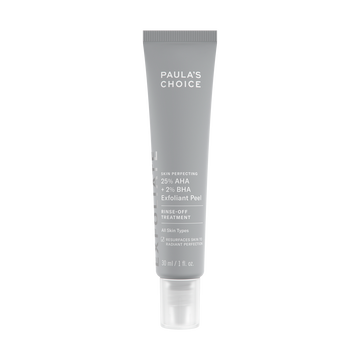
25% AHA + 2% BHA Exfoliant Peel
paulaschoice.com
$44.00
paulaschoice.comAt-home peels are typically of the more superficial variety and can lessen the appearance of dark spots, too. Dr. Graf likes the Paula’s Choice 25% AHA + 2% BHA Exfoliant Peel, but anything with glycolic acid, mandelic acid, or lactic acid would be suitable for brightening. She also recommends the Arbonne DermResults Daily Radiance Peel Pads, which includes caviar lime and phytic acid to gently exfoliate the skin without stripping. Dr. Mian’s only watch out for peels, toners, and serums with these types of ingredients? Don’t stack them; all these products combined could be too much for your skin barrier.
Retinoids
With the exception of pregnant women and those with extremely sensitive skin, retinoids really are a wonder solution for reducing many signs of aging. And newer, gentler products such as over-the-counter retinol products but still efficacious varieties don’t come with the irritation and intolerance this class of molecules has been known for in the past.
“There’s a retinoid that’s suitable for everyone, whether it means you use it once a week, or you sandwich it between other skincare products,” says Dr. Mian. And using that retinoid in a way that works for you can reduce unevenness by stimulating collagen production and deterring the production of hyperpigmentation, says Dr. Graf.
It’s important to note, however, that retinoids aren’t typically recommended as spot treatments but rather as overall skin applications, at least for dark spot reduction. If you’re looking for something with prescription strength, you’ll need to consult a dermatologist. “The use of topical prescription retinoids should be based on the recommendations of your dermatologist,” says Dr. Graf. “I recommend starting at a low dosage of retinoid and beginning with use a couple of times per week before working up to every other day use — and finally daily use. If you start by slowly incorporating it into your routine, most people can avoid skin irritations.”
Looking for something over the counter? Consider the Shani Darden Skin Care Retinol Reform Treatment Serum. “It includes an encapsulated retinol designed to be non-irritating as well as an AHA to improve skin texture and brighten skin,” says Dr. Graf.
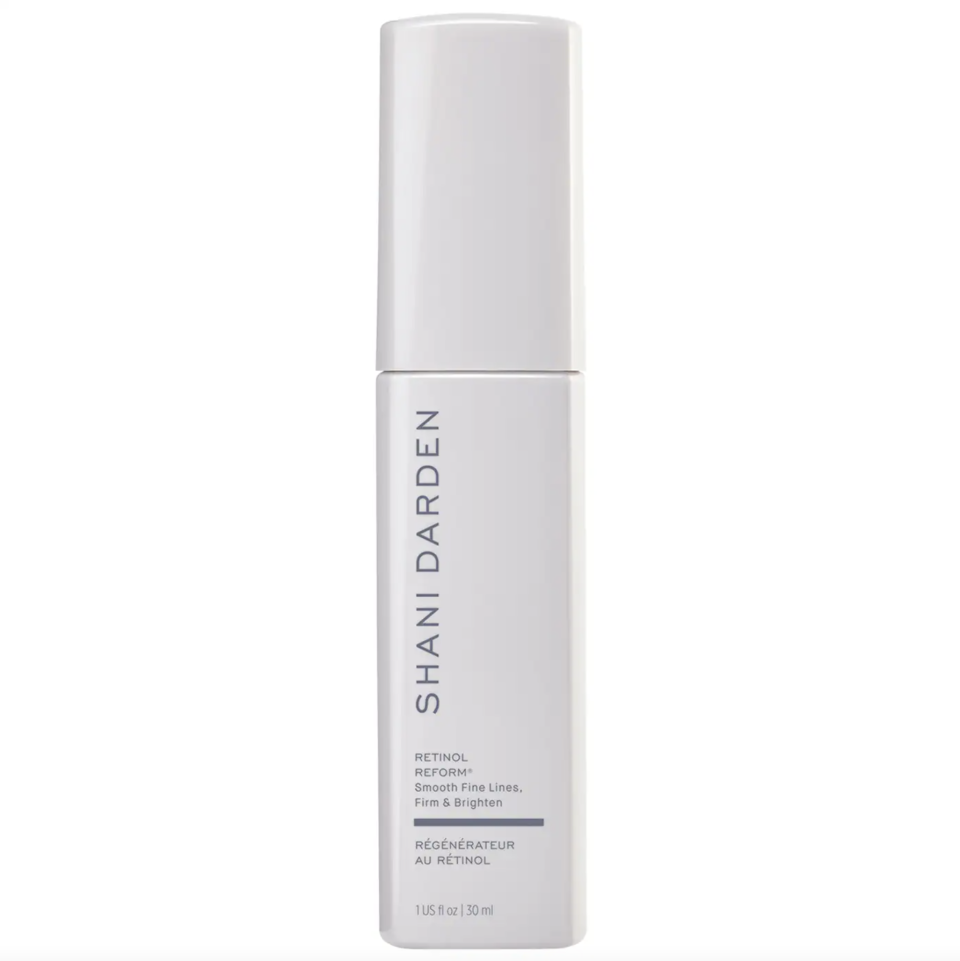
Retinol Reform® Treatment Serum
sephora.com
$88.00
sephora.comHydroquinone
Proceed with extreme caution when it comes to this topical solution, which is typically administered as a spot treatment and is sometimes positioned for lessening the appearance of melasma and other dark spots. According to Dr. Mian, it can be used at certain concentrations at board-certified dermatologist-specified frequencies for very brief periods of time, since it decreases pigment synthesis and blocks certain enzymes involved in the production of melanin. But prolonged use can be dangerous and may cause permanent pigment deposition in some. It’s best to only use this under the guidance of a trusted dermatologist, if at all.
Other Topicals
Both Dr. Mian and Dr. Graf maintain that in-office procedures are most effective when combined with at-home methods that enhance their results, some of which have already been discussed above. Retinoids and at-home peels aren’t the only options here, though; serums, essences, creams, and skincare products that contain a variety of other ingredients that also address dark spots exist, including tranexamic acid (aka TXA), azelaic acid, kojic acid, niacinamide (aka vitamin B), and vitamin C. While you might want to experiment with products containing one or more of these agents, you’d never want to try all of them at once—or go from zero to 60 in applying them round the clock either.
“All of these ingredients can be irritating if used incorrectly or over-applied,” says Dr. Graf. “I recommend slowly working your way up.” And don’t forget your SPF, either, if you’re going to be out in the sun after using these topicals. Same goes for the other treatment methods on this list, too.
According to Dr. Mian, kojic acid and niacinamide are “very good at lightening pigment” and generally non-irritating, so you might want to start there if you have sensitive skin, using a product only as is directed. “Products with vitamin C and glycolic acid help lessen the appearance of dark spots as well,” says Dr. Graf.
Newhite Anti-Dark Spot Cream
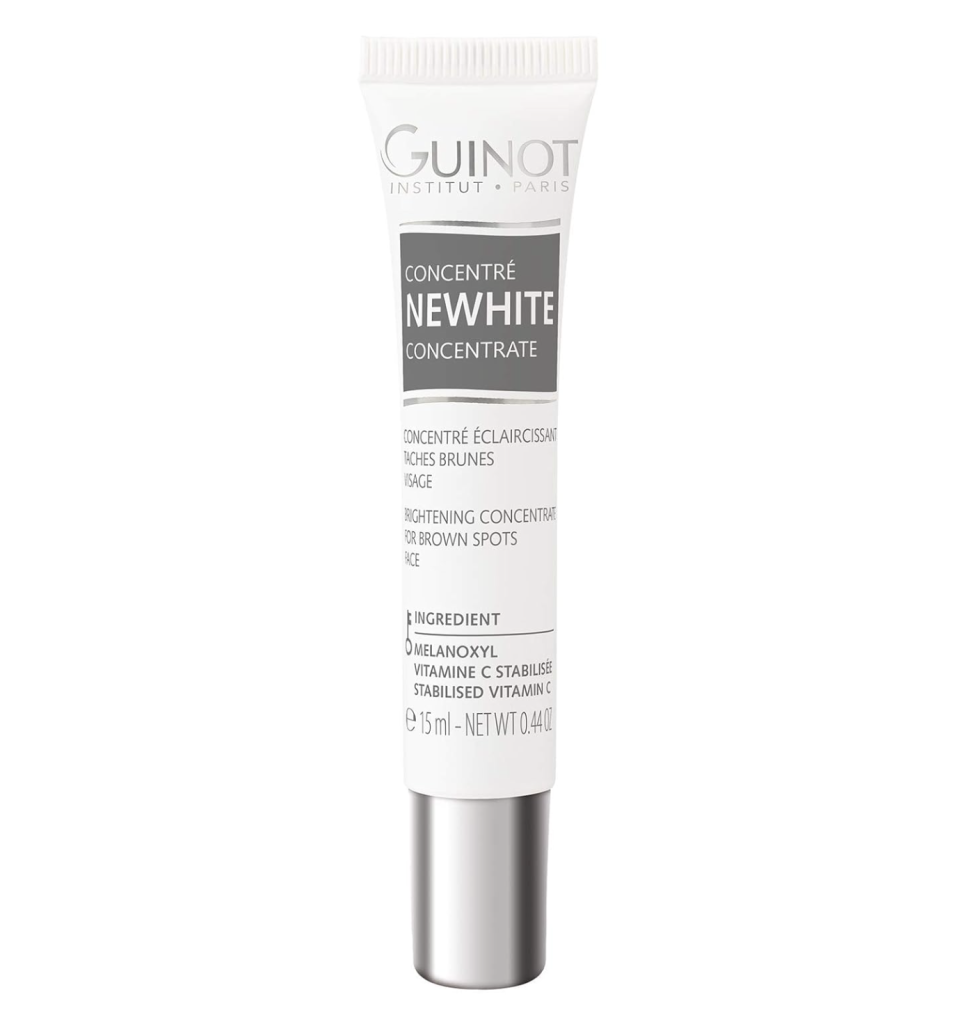
Newhite Anti-Dark Spot Cream
amazon.com
$60.00
amazon.comAzelaic Topical Acid 10%
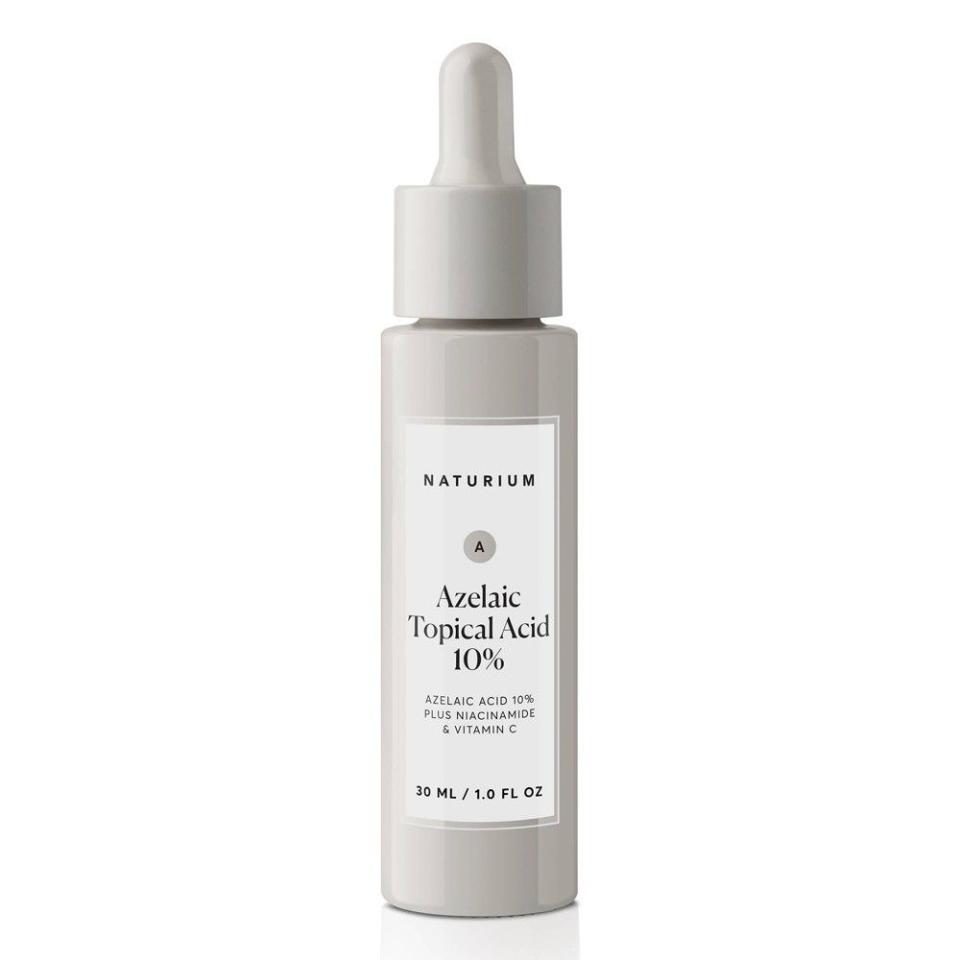
Azelaic Topical Acid 10%
target.com
$19.99
target.comDermResults Illuminating Skin Therapy Concentrate
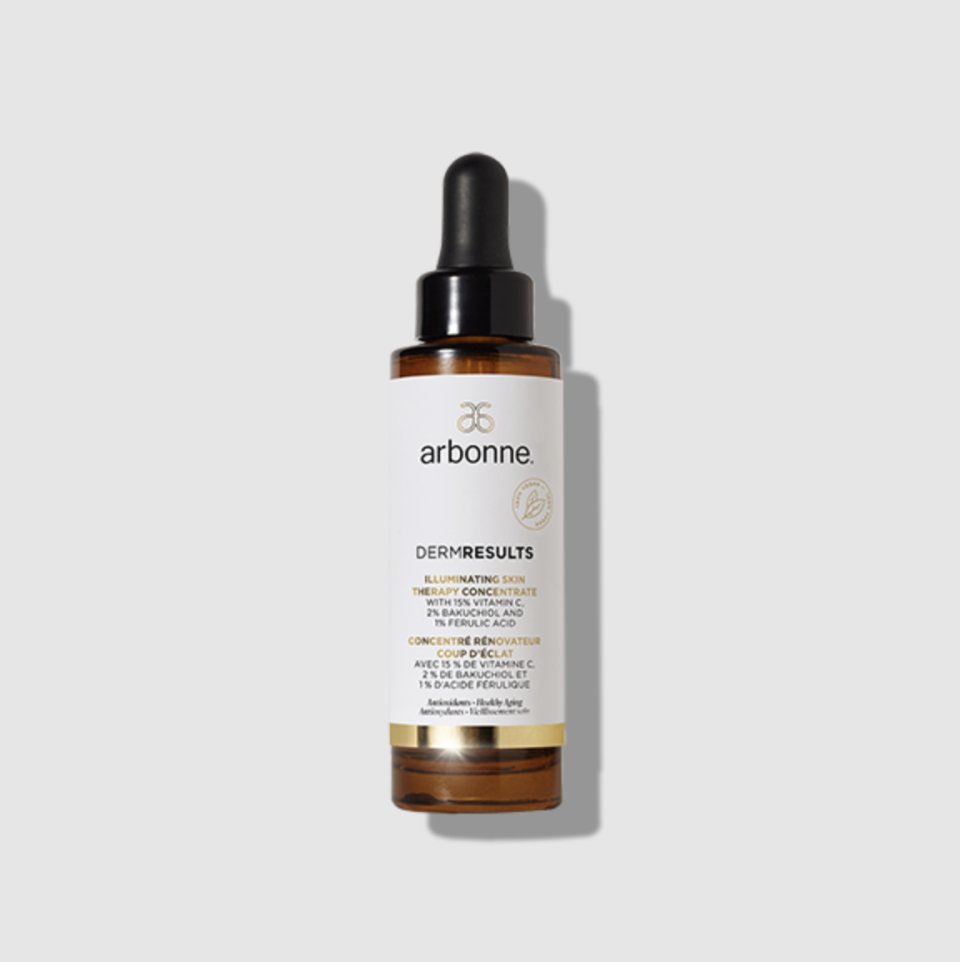
DermResults Illuminating Skin Therapy Concentrate
arbonne.com
$119.00
arbonne.comHow to prevent dark spots
Protecting your skin is often the best form of dark spot treatment in the long run, since less sun damage can mean fewer spots and patches to treat in the first place. Dr. Mian suggests avoiding the sun between 10 am and 2 pm—when the sun is highest in the sky and strongest—as well as wearing protective hats and garments and always applying a broad spectrum sunscreen with an SPF of 30 or higher.
If you have a condition like melasma, look for a sunscreen with physical blockers, too, since melasma can, again, be flared by the sun and heat. As far as PIH goes, Dr. Mian says to avoid picking pimples and any lesions on your face, which can trigger more inflammation that can cause dark spots to be larger and linger longer.
You Might Also Like

